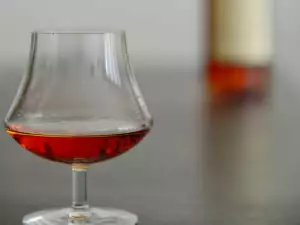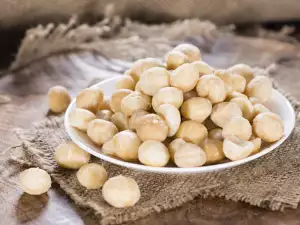Scotch is an alcoholic drink or more accurately, a whiskey. What's more specific about it is that it's made in Scotland. In fact, if a whiskey is made anywhere else it cannot rightly be classified as Scotch. Besides being distilled there, the drink needs to have aged at least 3 years. 100% Scotch is made from fermented grain mash.
History of Scotch
This type of whiskey has a very old history, dating back to 2nd century BC. It is thought that the prototype for Scotch was a drink that the Celts obtained after boiling barley. In that form, the alcoholic drink was not especially longlasting. At the same time, its alcoholic content was low. Many centuries later they learned distillation and using it made a higher quality alcohol product. And that is how Scottish whiskey was born.
During the 9th century, Irish clergymen settled in Scotland with the idea of converting the local residents. It was they who brought the first distillation equipment with them and taught the local population this magical process. Not long after, Scottish farms began to distill their own drinks in their own pot stills. These were nothing special but still got the job done.
Ultimately the production of homemade alcohol solidified its place in Celtic life. Gradually they began paying ever more thought to this process and even improving on it. This way they discovered that if the barley were to be soaked it sprouted and the material gained better taste properties. Later they found the other important process used in modern production - the drying of the material.
This happened by complete accident. A man wanted to stow away the raw material and put it through heat treatment. The result turned out to be absolutely astonishing and soon enough all producers began applying this method. The fuel for the fire was also chosen inadvertently. The Scottish used peat turf since it was cheaper but later discovered that it actually gave the resulting Scotch an incredibly nice aroma.

Production of Scotch
To produce Scotch, malted barley is needed. The grains are left to soak in water. Once they sprout, the next stage of production can begin - the drying of the material. The malted grains are dried by a special method in a furnace with fire burning from peat turf. Sometimes the fire is kept burning with other materials too. Because of this process we later feel a specific, light, smoky aroma when drinking real Scotch.
The drying stage is key because through it they obtain the raw material known as malt. The resulting malt is mixed with water to get something like a porridge. It in turn is heated. When the time is right they add yeast, so that fermentation can begin. This process continues until alcohol is produced. As soon as this happens, the entire substance is poured into a large container. Usually this is a copper vat. The vat then begins to be heated by fire. Later, a second distillation takes place.
Once this process is completed as well, the distilled drink is put to age in oak barrels for at least 3 years. The volume of the oak vats needs to be no more than 185 gal (700 L). For the malt whiskey, it is important for the alcoholic content not to exceed 94.8% ABV during distillation. Of course, it is different for the different types. Another crucial point for the Scottish whiskey is not to add any artificial flavors or colors (besides caramel) in order to maintain the unique appearance of the alcohol.
Types of Scotch
There exist several types of Scotch. Usually the alcoholic drink is classified based on the region it is made in. Scotch produced in the Highland council area can have a different taste. Regardless, all malt whiskeys from this area are distinguished by their pungent aroma. Scottish whiskeys from the Lowlands are also worth noting. They have a relatively weaker aroma but are very sweet and delightful to the taste.
The Scotches prepared on the island of Islay are distinct as well. They make an impression with the smoky smell that also possesses a tinge of salty seawater. This type of whiskey also has a barely discernible scent of iodine. Another very popular type of Scotch is one made in a region called Speyside. This malt drink has a soft taste that gives it a refined quality.
Storing and Serving Scotch

Scotch must be stored at room temperature. It is served in the well-known whiskey glasses to reveal its wonderful characteristics. This malt whiskey can be served during conversation before a meal, accompanied by a glass of ice water. Only 1/3 of the glass should be filled when pouring it.
Experts recommend not adding ice to the drink since this will prevent one from experiencing its true taste. They say that just several drops of cold water get the job done. Of course these aren't hard set rules, simply points of advice. Ultimately everyone should consume the alcohol as they see fit. Scotch should be drunk in small sips to allow the consumer to fully savor its scent and taste.
Cooking with Scotch
Besides on its own, Scotch is served in combination with other drinks in the form of a cocktail. It turns out that the malt drink successfully combines with alcoholic beverages such as white rum, different liqueurs, bourbon, sweet vermouth, amaretto and many others. It can also be combined with sodas and fruit juices. A little bit of Scotch can be added to coffee or tea. Several drops of it have the ability to add a specific and interesting fragrance to all kinds of baked goods.
Benefits of Scotch
This drink is a source of potassium, calcium and sodium, so undoubtedly its moderate consumption is beneficial to the body. The benefits of Scotch are known chiefly among the Scottish. Over the years they've discovered that it helps against various ailments. If suffering from cold or flu, it takes on the role of a natural remedy since it has a warming and relaxing effect. Compresses with Scotch, on the other hand, are used on bruised areas.
















Comments